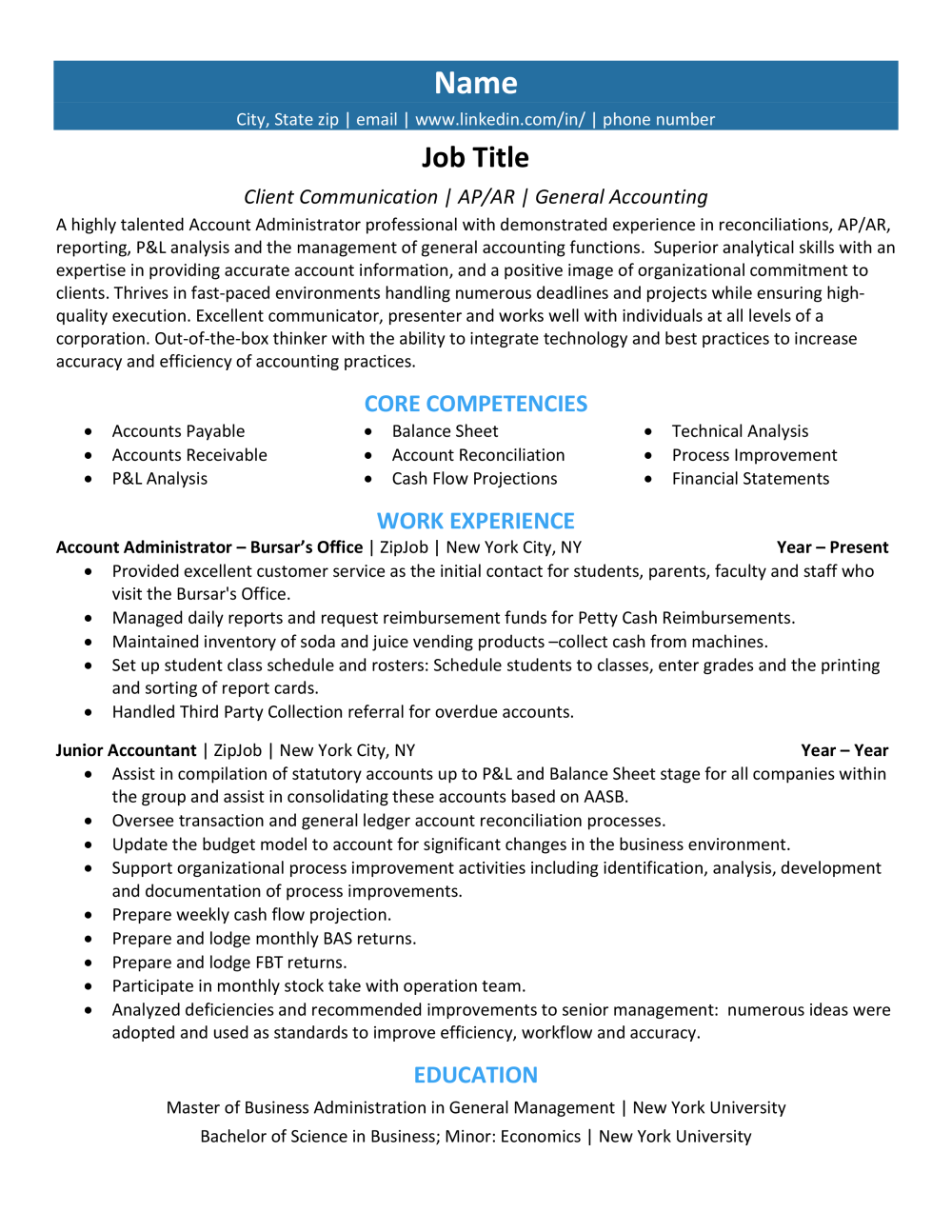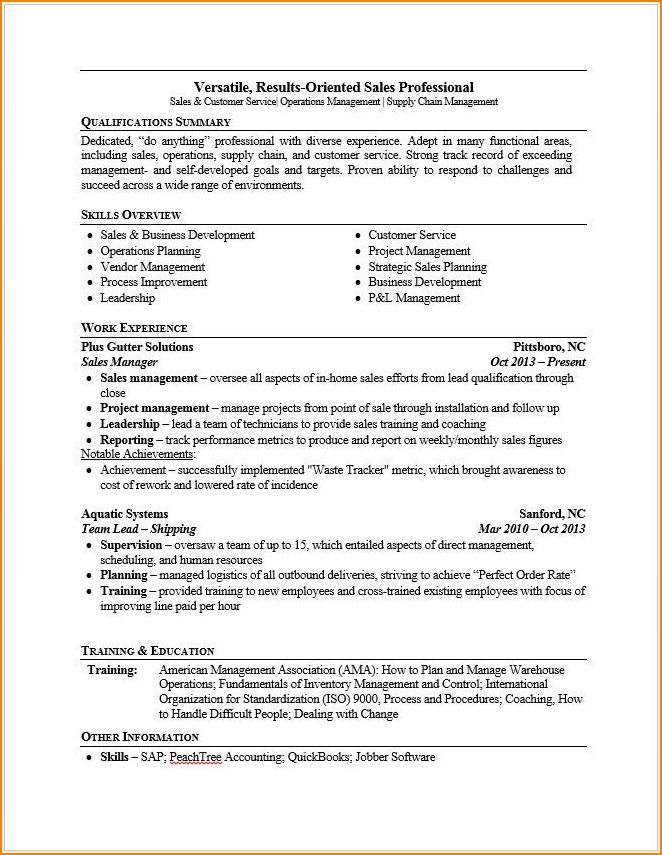Best Resume Formats for Successful Job Applications (with Examples)
An eye-catching, informative resume has the unique power to change the entire trajectory of your career — for the better. Whether you’re looking to change jobs, step things up a gear, or take the next step on the ladder, the first step is nailing your next application.
Ahead of working on your resume, you have a crucial decision to make: Which format should you use? It may come as a surprise to learn that there is more than one option in the mix. As you will see in the following guide, there are three solid approaches you may want to take.
If you want to knock the hiring manager’s socks off, you’ve come to the right place. In the following guide, we will take a look at the best resume formats, when to use each of them, and how you can get started. Plus, we have some resume format samples for inspiration.
Resume formats, explained
Before we take a look at the most popular resume formats, let’s deal with the first hurdle. What exactly is a resume format?
In the simplest of terms, this is the structure that you use when laying out your resume. It is where each section goes on the page. It dictates which sections take priority over the others, depending on what aspects of your career history you want to showcase.
While most people are familiar with the chronological — or reverse chronological — resume format, there are two alternatives that you may not have considered. In the following guide, we will be delving into each of these formats and explaining when you should use them.
The 3 basic resume format styles
Now that you understand what a resume format is, let’s break the options down for you. The three main types of resume format that you may use are as follows:
Chronological resume format (or reverse chronological)
Combination resume format (or hybrid format)
The above formats differ slightly from one another and each works in a specific scenario. When deciding which resume format to use, it’s important to consider a) the job you are trying to land, and b) the experience you have in that particular field.
Of course, it’s also worth noting that there may be times when you create different versions of your current resume. Depending on the specific job at play, it may be smarter to go with a functional resume format, for example.
As you read through this comprehensive guide, you will learn when it is best to use each resume format for an upcoming application.
Chronological resume format
Chances are, you’ve written a chronological resume before now. Most people have as this is the standard resume format that they teach you how to write in school. It includes all of the basic information about your career history in a clear, easy-to-read layout.
The name “chronological resume” is something of a misnomer. For this structure, you actually lay out your experience and education in reverse chronological order. That means that you start with your most recent accolades, and then work your way back in time.
Confused about how to get started? You don’t need to be. To create a chronological resume format, you simply need to know which elements to include (and what order to put them in). Luckily, we have you covered. Let’s take a look at what this resume format includes:
Resume header
Summary section
Work experience section
Education section
Skills section
Optional sections (e.g. voluntary experience)
The above sections make up this resume format, giving you the space to concisely show off your education and experience so far.
Want to bolster your existing expertise? You can add optional sections. For example, if you have undertaken unpaid work that aligns with the job, add a “voluntary experience” section.
Resume format sample:

When to use this resume format
Think that this resume format is right for you? Most of the time, this is the best resume format for those on a traditional career path. If you have always stayed in the same lane, this approach allows you to highlight your wealth of experience in the industry perfectly.
So, if you work in marketing, have always worked in marketing, and plan to continue doing so, this is the best resume format for you. The reason is clear.
A chronological resume format places your work experience front and center. This section takes up the most room on the page and is the star of the show. Yes, it’s all about what you’ve done and where.
Of course, that doesn't mean that this resume format neglects your other attributes. Your education and skills are also displayed on the page too.
When the hiring manager glances at your resume, they will quickly be able to determine what your most recent experience is. They can also see what top talents you have and the certificates you have aquireded.
Since this is often the resume format that hiring managers expect to see, it is the safest option. However—as we will cover in the rest of this guide—there are times when other resume formats suit you better. While it may be tempting to default to this format, take the time to consider the other options before choosing the right one for your next application.
Tips for writing a chronological resume format
If you’re certain that a chronological resume format is right for you, it’s time to get working on yours. You can use the resume format sample above for inspiration when it comes to laying out your document. Here are some additional tips that will help you get it right from the start:
1. Make your resume summary shine
First things first, you need to write your resume summary. This is a short blurb that sits directly below your header and tells the hiring manager what you bring to the table. If you want to write a winning summary, it should include the following elements:
Your Unique Selling Proposition (USP)
Between three and five key skills that align with the role
One measurable accomplishment from your experience
The language you use here matters. As the only freeform part of your resume, your summary is your chance to show some enthusiasm. With that in mind, picking the right words for this part of your application could make all of the difference.
2. Show off your workplace accomplishments
As we have already covered, your work experience is the main event in a chronological resume. However, you need to make sure that you make the most of this section. The secret to getting that right is focusing on your accomplishments rather than just your duties.
When you are including a position, start with the basics: the company name, its location, your dates of employment, and your title. Beneath that, use bullet points to add the details.
One of the biggest mistakes that people make here is including a standard list of their tasks and duties. That tells the hiring manager what you had to do on a daily basis, but not what you accomplished. Switch the narrative and talk about your biggest achievements instead.
3. Include the right keywords for the job
Before writing any type of application, it pays to do some keyword research. That’s because many employers now use applicant tracking systems (ATS) to scan incoming resumes.
The software checks each resume to see how well it fits the criteria of the vacancy. Only the applications that best fit the role will make it into the hiring manager’s inbox. If you want to make sure that your resume gets past the ATS, including the right keywords is essential.
To get an idea of which words and phrases to use, go back to the original job posting. Pick out any words that apply directly to the job or industry. Sprinkling these throughout the body of your resume may mean that your application is more likely to beat the bots.
Functional resume format
Next up, let’s talk about a functional resume format. This resume puts the spotlight on your skills and expertise, rather than focusing so heavily on your prior work experience.
Much like a chronological resume and the combination resume, it includes a summary and a skills section toward the top. However, before you dive into the work experience and education, there is an additional “transferable qualifications” (or similar) section here.
Thanks to the addition of that extra section, there is less space available for your work experience. That’s perfectly okay. The entire point of this resume format is that it draws attention to the transferable skills that you have. Here’s what it should include as standard:
Resume header
Summary section
Transferable skills (or areas of expertise)
Work experience section
Education section
Skills section
Optional sections (e.g. voluntary experience)
Spoiler: The most popular skills employers are looking for span from career to career. So, if you’re looking to switch to a new path, this is the best resume format for you.
A large chunk of the document is dedicated to your area of expertise or specific strengths. Use this format to let the hiring manager know that you have what it takes to hit the ground running. You will have the space to share the range of skills you have picked up so far.
Resume format sample:

When to use this resume format
The functional resume is the best resume format for career changers. If you’re looking to move into a new sector, you can use this layout to show the hiring manager that you have skills and expertise that will be useful in the new role or, indeed, industry.
Since your work experience won’t directly align with the job for which you are applying, a functional resume side-steps the issue. You can show that you have the right skills to meet the demands of the role without having worked directly in this particular field.
It doesn’t end there. If you have taken a career break — for whatever reason — you may find that the functional resume format works well. This approach draws the hiring manager’s attention away from the gap in your resume and toward the skills that you possess instead.
While you don’t want to cover up the fact that you have had a break, emphasizing your skills rather than your discrepancies is a smart move. Should you want to do so, you can explain the gap in your cover letter or, as many people choose to do, in an interview setting.
Finally, if you are a recent graduate, you may find that the functional resume works for you. It’s likely that you don’t have a wealth of work experience. That is perfectly okay since we all have to start from somewhere. If that’s the case, use this resume format to show your value.
Tips for writing a functional resume format
Ready to get started and create a functional resume format? As you can see in the resume format sample, this structure allows more space for your skills and expertise than your work experience. Before you start writing your resume, here are some tips to keep in mind.
1. Select the specific skills for the job
Since your skills are the most important aspect of this resume format, you need to make sure that you choose the right ones. This part of the process comes down to research.
Consider what skills the vacancy requires and take things from there. It’s helpful to go through the skills one by one, and think about whether you have gained them elsewhere.
Using the same phrasing that the hiring manager uses is the way to go. As we have mentioned, using the right keywords in your resume will help you get past the ATS. You can include these skills in your summary, the skills section, and the additional section too.
2. Include a selection of soft skills too
Soft skills are vital no matter which career path you take. These are the attributes that allow you to work well with others and get the job done. It’s no wonder that 41% of Americans say they use soft skills most frequently in either their current or most recent role.
Examples of soft skills include teamwork, problem solving, and communication. When you’re writing a functional resume, it’s useful to stress these skills. The hiring manager will be looking for someone who not only meets the job criteria but also fits the team dynamic.
3. Keep your work experience short and sweet
Sure, your work experience section is not the main focus of this resume format. However, that doesn't mean that you can leave it off entirely. You still need to include a section dedicated to your previous formal work. However, it can be short and sweet.
Make sure you include the basic information. That is your company name, location, job title, and dates of employment. You can also add in some bullet points below each of these parts but you don’t have to. If there’s not the space to do so or it’s not relevant, leave it out.
Taking this approach means that your work experience will take up less space on the page. That looks neater while also freeing up some extra room for the important additional section.
4. Emphasize your education and certificates
If you are a recent graduate who is using the functional resume format, be sure to emphasize the certificates that you have. Training or education that will help you land the job at hand should be clearly outlined as part of your resume structure.
You can simply list your education and the qualifications you gained. That’s fine. However, if you want to take things one step further, consider including any details that will see you a shoe-in for the job. For example, you may want to namecheck your thesis, any extended projects, or modules that relate directly to the role for which you are applying.
Combination resume format
Can’t decide between a chronological resume or a functional resume. Why not go for the middle ground? A combination resume — sometimes called a hybrid resume — offers the best of both worlds. To create this resume format, you blend elements of the two above.
For this type of resume, both your skills section and your work experience will be featured prominently on the page. You give equal weight to the two, meaning that the hiring manager gets a well-rounded picture of your professional prowess. You need to include:
Resume header
Summary section
Skills summary section
Work experience section
Education section
Skills section
Optional sections (e.g. voluntary experience)
As you can see here, the order changes slightly when you choose a hybrid resume format. This small tweak allows you to focus the reader’s attention on your dazzling skills before they get into the meat of your work experience and education.
Resume format sample:

When to use this resume format
The combination resume format is the least popular out of the three… but that doesn’t mean that you should overlook it entirely. If you are side-stepping in your career, you might find that this is the best resume format for your next application.
For example, you might have years of experience in your field but want to transition to a slightly different role. In that case, both your work experience and the transferable skills that you have will be valuable. Using the hybrid resume format allows you to show off both.
Additionally, if you are looking to step up your game — to, say, managerial level — you can use this resume format to do so. Your work experience section will highlight your experience of the industry, while you can use the skills summary to pinpoint your leadership skills.
Tips for writing a combination resume format
Writing a combination resume format means taking elements from a functional resume and a chronological resume. But how does that look in practice? Take a peek at our resume format sample above. You can also use these simple writing tips to help you along the way.
1. Split your skills into two distinct sections
You don’t have to be Sherlock Holmes to spot something different about this resume format. Yes, it has two separate skills sections: your general skills section (that you find on any other resume), and your skills summary.
Your general skills should include those that apply directly to the job or industry. However, your skills summary allows you a little more space. You can write short bullet points describing the skills, why they fit the role criteria, and how you apply them.
In your skills section, you may write “Microsoft Excel proficiency” while you would include a line, such as “Proficient in using Microsoft Excel for bookkeeping” in your skills summary.
2. Shorten your work experience, if needed
If you are limited on resume space, you can cut back your work experience section. You may do this by only including a handful of bullet points beneath each position. Consider what your most notable achievements are in each case and include solely those below each role.
You might need to play around with this section to ensure that it fits well on the page. As a general rule, you should note around three former positions or go back around 10 years into your career history. Figure out what works best for your combination resume format here.
3. Don’t be afraid to be flexible
The best thing about the combination resume format is that it is flexible. The structure of this resume allows you to create a structure that aligns with your short-term career goals.
With that in mind, when you’re working on this resume format, move sections around as you need to do so. You may find that there is a specific approach that works well for the application that you are submitting. Give yourself the freedom to find a format that suits your needs. That way, you will have the best chance of landing that job interview.
Which format do most employers prefer for resumes?
Generally, employers expect to see a chronological format when they are reviewing resumes. This is the most commonly used format and the easiest for them to understand. If you have a linear job history and you’re ready to take the next step, this format will work.
However, that doesn't mean that you should rule out the other resume format options. As we have covered in this guide, there are times when either a functional or a combination resume format will be the best way to go. Before deciding which one is right for you, consider what you are hoping to achieve with your resume and what you want to highlight.
Advice on how to choose the best resume format
Now that you’re clued-up on the best resume format options, let’s talk about how to choose the right one for you. You might find there are times when you need a chronological format and times when either a combination or functional approach works better. When you’re making the decision, here are some tips that you can keep in mind:
Consider the experience you have. When you’re choosing which format to use, the level of experience you have plays a vital role. If you don’t have much experience in the field, you may want to go for a functional resume format. On the other hand, if you have oodles of work experience, a chronological format could be the way to go.
Put yourself in the hiring manager’s shoes. One of the best ways to approach this conundrum is to think like the hiring manager. What are they looking for in a candidate and how can you best align your resume with that? Refer back to the job posting and read the criteria. Next, consider which format will help you meet it.
Try out different approaches. Don’t confine yourself to one resume format — try out all three at different times. You should always tailor your resume to the vacancy you are applying for. So, when you start editing it, consider switching up the format. The more energy you put into this process, the more likely you are to succeed.
Final words
Understanding what the three most common resume formats are is the first step in your journey. In this guide, we have given you an in-depth explanation of the best resume formats you can use and why you should use each of them. Now that you have the inside scoop, you should feel prepared to pick one of them for your upcoming application. Get started now!
Writing a stellar resume is the first step in landing more interviews and getting hired faster. If you want to make sure that your application hits the mark, use our free resume checker tool now. Getting ahead of the competition has never been so easy!

